Shilpa Manandhar
Multi-label Cloud Segmentation Using a Deep Network
Mar 15, 2019

Abstract:Different empirical models have been developed for cloud detection. There is a growing interest in using the ground-based sky/cloud images for this purpose. Several methods exist that perform binary segmentation of clouds. In this paper, we propose to use a deep learning architecture (U-Net) to perform multi-label sky/cloud image segmentation. The proposed approach outperforms recent literature by a large margin.
Analyzing Solar Irradiance Variation From GPS and Cameras
Apr 19, 2018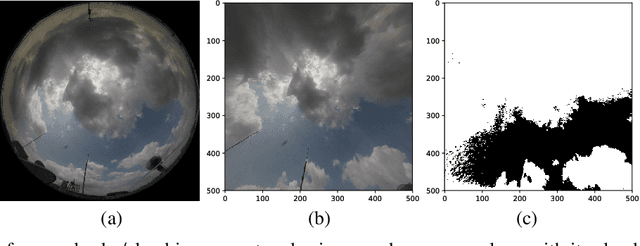
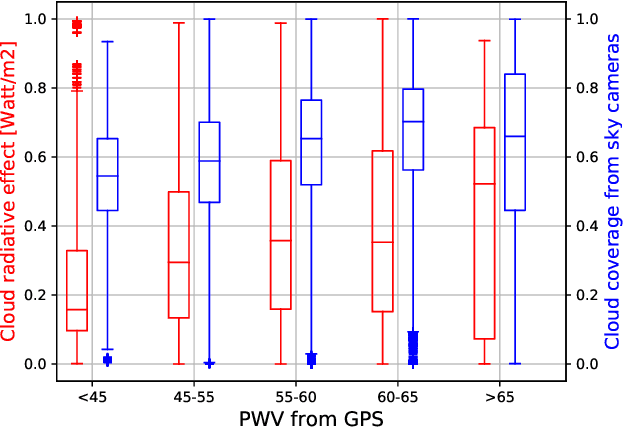
Abstract:The total amount of solar irradiance falling on the earth's surface is an important area of study amongst the photo-voltaic (PV) engineers and remote sensing analysts. The received solar irradiance impacts the total amount of generated solar energy. However, this generation is often hindered by the high degree of solar irradiance variability. In this paper, we study the main factors behind such variability with the assistance of Global Positioning System (GPS) and ground-based, high-resolution sky cameras. This analysis will also be helpful for understanding cloud phenomenon and other events in the earth's atmosphere.
Correlating Satellite Cloud Cover with Sky Cameras
Aug 24, 2017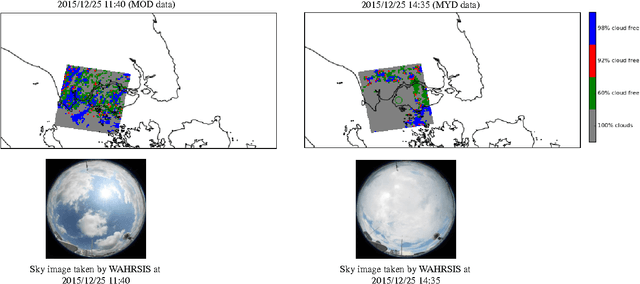
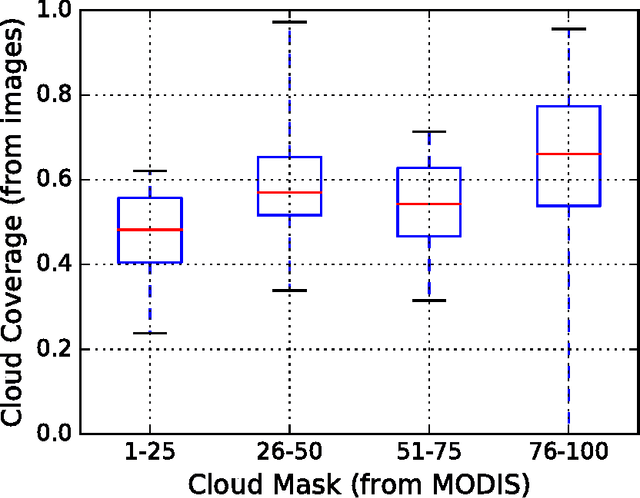
Abstract:The role of clouds is manifold in understanding the various events in the atmosphere, and also in studying the radiative balance of the earth. The conventional manner of such cloud analysis is performed mainly via satellite images. However, because of its low temporal- and spatial- resolutions, ground-based sky cameras are now getting popular. In this paper, we study the relation between the cloud cover obtained from MODIS images, with the coverage obtained from ground-based sky cameras. This will help us to better understand cloud formation in the atmosphere - both from satellite images and ground-based observations.
Study of Clear Sky Models for Singapore
Aug 24, 2017


Abstract:The estimation of total solar irradiance falling on the earth's surface is important in the field of solar energy generation and forecasting. Several clear-sky solar radiation models have been developed over the last few decades. Most of these models are based on empirical distribution of various geographical parameters; while a few models consider various atmospheric effects in the solar energy estimation. In this paper, we perform a comparative analysis of several popular clear-sky models, in the tropical region of Singapore. This is important in countries like Singapore, where we are primarily focused on reliable and efficient solar energy generation. We analyze and compare three popular clear-sky models that are widely used in the literature. We validate our solar estimation results using actual solar irradiance measurements obtained from collocated weather stations. We finally conclude the most reliable clear sky model for Singapore, based on all clear sky days in a year.
Analyzing Cloud Optical Properties Using Sky Cameras
Aug 24, 2017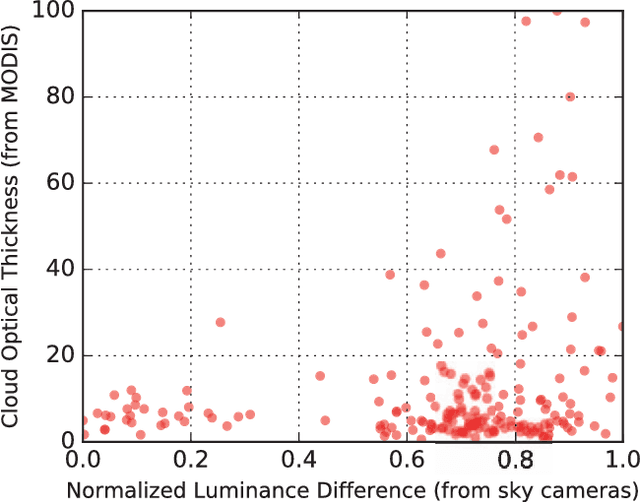
Abstract:Clouds play a significant role in the fluctuation of solar radiation received by the earth's surface. It is important to study the various cloud properties, as it impacts the total solar irradiance falling on the earth's surface. One of such important optical properties of the cloud is the Cloud Optical Thickness (COT). It is defined with the amount of light that can pass through the clouds. The COT values are generally obtained from satellite images. However, satellite images have a low temporal- and spatial- resolutions; and are not suitable for study in applications as solar energy generation and forecasting. Therefore, ground-based sky cameras are now getting popular in such fields. In this paper, we analyze the cloud optical thickness value, from the ground-based sky cameras, and provide future research directions.
Cloud Radiative Effect Study Using Sky Camera
Mar 15, 2017


Abstract:The analysis of clouds in the earth's atmosphere is important for a variety of applications, viz. weather reporting, climate forecasting, and solar energy generation. In this paper, we focus our attention on the impact of cloud on the total solar irradiance reaching the earth's surface. We use weather station to record the total solar irradiance. Moreover, we employ collocated ground-based sky camera to automatically compute the instantaneous cloud coverage. We analyze the relationship between measured solar irradiance and computed cloud coverage value, and conclude that higher cloud coverage greatly impacts the total solar irradiance. Such studies will immensely help in solar energy generation and forecasting.
Detecting Rainfall Onset Using Sky Images
Oct 21, 2016



Abstract:Ground-based sky cameras (popularly known as Whole Sky Imagers) are increasingly used now-a-days for continuous monitoring of the atmosphere. These imagers have higher temporal and spatial resolutions compared to conventional satellite images. In this paper, we use ground-based sky cameras to detect the onset of rainfall. These images contain additional information about cloud coverage and movement and are therefore useful for accurate rainfall nowcast. We validate our results using rain gauge measurement recordings and achieve an accuracy of 89% for correct detection of rainfall onset.
 Add to Chrome
Add to Chrome Add to Firefox
Add to Firefox Add to Edge
Add to Edge